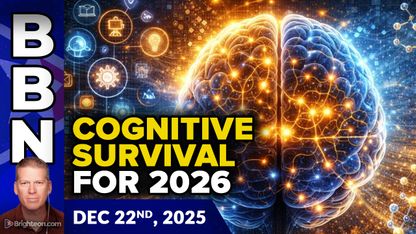
Though nobody really knew or could explain how ECT worked, it took the medical world by storm, quickly becoming the go-to treatment for everything from depression and schizophrenia to homosexuality. Horror stories of people being forced to submit to the horrors of ECT began to emerge, and movies like One Flew Over the Cuckoo’s Nest revealed it for what it truly was, pure torture with unsubstantiated results.
While unmodified ECT – where the treatment is administered without the benefits of anesthesia or muscle relaxants – is no longer used in mainstream medicine, a more modified version of ECT has been gaining in popularity in recent years. And now a new type of electric therapy is being touted as a miracle cure for veterans suffering from Post-Traumatic Stress Disorder (PTSD). But, it has its risks.
Known as Magnetic EEG/ECG-guided Resonant Therapy, or MeRT, this controversial treatment has shown promise in the treatment of many of the symptoms associated with PTSD, including uncontrolled rage, anxiety, memory problems and sleep disorders. Nobody knows, however, just what the long-term health cost of this type of treatment might be. And, since MeRT has shown promise as a way to increase cognitive function, there are serious concerns about the possible ways the military might use it in the future.
Electric shock therapy by another name?
PTSD affects between 11 and 20 percent of veterans returning from active duty in the Middle East, and this condition is stubbornly resistant to most forms of treatment, including medication and even cognitive behavioral therapy. Sufferers struggle with nightmares, flashbacks, isolation and terrible anxiety, along with other problems which prevent them from leading normal, happy lives.
As reported by Defense One, a team of researchers at the Brain Treatment Center’s Newport Brain Research Laboratory, located in San Diego, California, is currently involved in a double-blind clinical trial which it hopes will result in FDA approval for the procedure. Their treatment involves what is casually referred to as “brain zapping,” the process of stimulating the brain in a certain way through the use of magnetic fields (rather than electricity, as with ECT), thereby attempting to restore it to the “normal,” balanced state it was in before exposure to the trauma of active combat.
Defense One explains:
The theory that underpins MeRT posits that many of these problems share a common origin: a person’s brain has lost the beat of its natural information-processing rhythm, what [lead researcher] Won calls the “dominant frequency.”
Your dominant frequency is how many times per second your brain pulses alpha waves. …
Navy SEALS tend to have higher-than-average dominant frequencis, [sic] around 11 or 13 Hz. But physical and emotional trauma can disrupt that, causing the back of the brain and the front of the brain to emit electricity at different rates. The result: lopsided brain activity. MeRT seeks to detect arrhythmia, find out which regions are causing it, and nudge the off-kilter ones back onto the beat.
While small-scale trials have shown promising results in veterans who have undergone MeRT, nobody knows what its long-term effects might be. And like ECT, MeRT leaves vulnerable patients open to abuse. Plus, EMF, the type of magnetic pulse used in this therapy, has already been linked to the development of cancer and diabetes.
Tests have also revealed that MeRT enhances performance and cognitive function. Imagine what the military could do with a therapy that takes already fit, healthy young men and massively enhances their cognitive and performance abilities. After enough “brain zapping” they could become little more than humanized robots, no doubt to be easily discarded when they have outlived their usefulness. Who will help them then?
Learn more at Psychiatry.news.
Sources for this article include:
Please contact us for more information.























